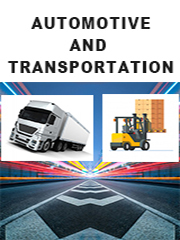Report overview
The automotive manufacturers most commonly use the following three types of sensors in autonomous vehicl
This report aims to provide a comprehensive presentation of the global market for Autonomous Vehicle Sensors, with both quantitative and qualitative analysis, to help readers develop business/growth strategies, assess the market competitive situation, analyze their position in the current marketplace, and make informed business decisions regarding Autonomous Vehicle Sensors. This report contains market size and forecasts of Autonomous Vehicle Sensors in global, including the following market information:
Global Autonomous Vehicle Sensors Market Revenue, 2018-2023, 2024-2029, ($ millions)
Global Autonomous Vehicle Sensors Market Sales, 2018-2023, 2024-2029, (K Units)
Global top five Autonomous Vehicle Sensors companies in 2022 (%)
The global Autonomous Vehicle Sensors market was valued at US$ 8798.8 million in 2022 and is projected to reach US$ 17520 million by 2029, at a CAGR of 10.3% during the forecast period. The influence of COVID-19 and the Russia-Ukraine War were considered while estimating market sizes.
In terms of region, the largest segment of Autonomous Vehicle Sensors Market would be Asia Pacfic, with a market share of over 41% in 2019. The follower is Europe accounted for nearly 29% of global market.
For applications of Autonomous Vehicle Sensors Market, Radar Sensors is the largest segment with a market share of nearly 88% in 2019. Carema Sensors and Lidar Sensors accounted for about 11% and 2% of global market, respectively.
We surveyed the Autonomous Vehicle Sensors manufacturers, suppliers, distributors and industry experts on this industry, involving the sales, revenue, demand, price change, product type, recent development and plan, industry trends, drivers, challenges, obstacles, and potential risks.
Total Market by Segment:
Global Autonomous Vehicle Sensors Market, by Type, 2018-2023, 2024-2029 ($ Millions) & (K Units)
Global Autonomous Vehicle Sensors Market Segment Percentages, by Type, 2022 (%)
Camera Sensors
Radar Sensors
Lidar Sensors
Global Autonomous Vehicle Sensors Market, by Application, 2018-2023, 2024-2029 ($ Millions) & (K Units)
Global Autonomous Vehicle Sensors Market Segment Percentages, by Application, 2022 (%)
Commercial Vehicles
Passenger Vehicles
Global Autonomous Vehicle Sensors Market, By Region and Country, 2018-2023, 2024-2029 ($ Millions) & (K Units)
Global Autonomous Vehicle Sensors Market Segment Percentages, By Region and Country, 2022 (%)
North America
US
Canada
Mexico
Europe
Germany
France
U.K.
Italy
Russia
Nordic Countries
Benelux
Rest of Europe
Asia
China
Japan
South Korea
Southeast Asia
India
Rest of Asia
South America
Brazil
Argentina
Rest of South America
Middle East & Africa
Turkey
Israel
Saudi Arabia
UAE
Rest of Middle East & Africa
Competitor Analysis
The report also provides analysis of leading market participants including:
Key companies Autonomous Vehicle Sensors revenues in global market, 2018-2023 (Estimated), ($ millions)
Key companies Autonomous Vehicle Sensors revenues share in global market, 2022 (%)
Key companies Autonomous Vehicle Sensors sales in global market, 2018-2023 (Estimated), (K Units)
Key companies Autonomous Vehicle Sensors sales share in global market, 2022 (%)
Further, the report presents profiles of competitors in the market, key players include:
Bosch
Continental AG
Denso Corporation
Veoneer
Valeo
Hella
Aptiv
Panasonic
ZF Friedrichshafen AG
Hitachi
Velodyne
Shenzhen Anzhijie Technology
Ibeo Automotive Systems
Ouster
Quanergy Systems
LeddarTech
Luminar
Hesai Tech
Leishen
Outline of Major Chapters:
Chapter 1: Introduces the definition of Autonomous Vehicle Sensors, market overview.
Chapter 2: Global Autonomous Vehicle Sensors market size in revenue and volume.
Chapter 3: Detailed analysis of Autonomous Vehicle Sensors manufacturers competitive landscape, price, sales and revenue market share, latest development plan, merger, and acquisition information, etc.
Chapter 4: Provides the analysis of various market segments by type, covering the market size and development potential of each market segment, to help readers find the blue ocean market in different market segments.
Chapter 5: Provides the analysis of various market segments by application, covering the market size and development potential of each market segment, to help readers find the blue ocean market in different downstream markets.
Chapter 6: Sales of Autonomous Vehicle Sensors in regional level and country level. It provides a quantitative analysis of the market size and development potential of each region and its main countries and introduces the market development, future development prospects, market space of each country in the world.
Chapter 7: Provides profiles of key players, introducing the basic situation of the main companies in the market in detail, including product sales, revenue, price, gross margin, product introduction, recent development, etc.
Chapter 8: Global Autonomous Vehicle Sensors capacity by region & country.
Chapter 9: Introduces the market dynamics, latest developments of the market, the driving factors and restrictive factors of the market, the challenges and risks faced by manufacturers in the industry, and the analysis of relevant policies in the industry.
Chapter 10: Analysis of industrial chain, including the upstream and downstream of the industry.
Chapter 11: The main points and conclusions of the report.
